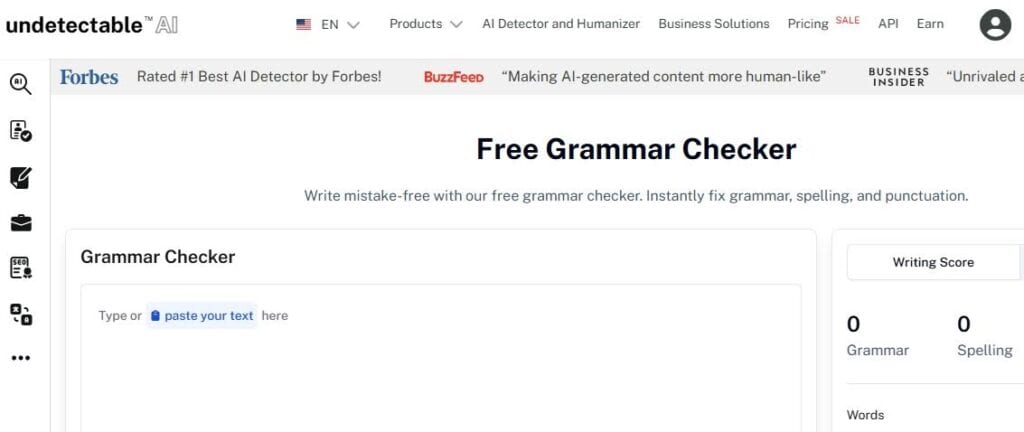When the words seem to flow together perfectly, and you can’t stop reading? There’s a good chance parallelism is doing the heavy lifting.
Parallelism isn’t just some grammar rule your English teacher made you memorize. It’s a powerful tool that can transform clunky sentences into smooth, memorable prose.
Think about phrases that stick in your head. “I came, I saw, I conquered.” “Government of the people, by the people, for the people.”
“Live, laugh, love” (yes, even that overused wall decor has perfect parallelism).
These phrases work because they follow the same grammatical pattern. They create a rhythm that feels satisfying to read and easy to remember.
But here’s the thing about parallelism: when it’s wrong, it’s noticeable. Your readers might not know exactly what’s off, but they’ll feel it.
The sentence will seem awkward or confusing. That’s why mastering this technique is so important for any writer who wants their words to flow smoothly.
Key Takeaways
- Parallelism creates rhythm and balance in your sentences
- It makes your writing clearer and more memorable
- Common structures like lists and comparisons require a parallel form
- Fixing faulty parallelism instantly improves your writing flow
- Great speakers and writers use it to make their words stick
Definition of Parallelism

Parallelism is the practice of using similar grammatical structures within a sentence, paragraph, or larger text. It’s about creating balance and rhythm through repetition of form, not necessarily content.
At its core, parallelism is about consistency. If you start a list with verbs, keep using verbs.
If you begin with noun phrases, stick with noun phrases. This consistency creates a pleasing pattern that readers can follow easily.


Never Worry About AI Detecting Your Texts Again. Undetectable AI Can Help You:
- Make your AI assisted writing appear human-like.
- Bypass all major AI detection tools with just one click.
- Use AI safely and confidently in school and work.
The beauty of parallelism lies in its simplicity.
Rather than add complexity to your writing, you make it cleaner and more direct.
When elements in a sentence have the same structure, readers can process the information faster and retain it better.
What Is Parallel Structure?
Parallel structure means that similar elements in your writing have the same grammatical form.
These elements might be words, phrases, or clauses that serve the same function in a sentence.
Let’s look at a simple example:
- Not parallel: I like swimming, running, and to bike.
- Parallel: I like swimming, running, and biking.
In the parallel version, all three activities are gerunds (verb forms ending in -ing). This consistency makes the sentence flow better and sound more natural.
Parallel structure applies to any elements that are connected or compared in your writing.
That might include items in a series, elements joined by coordinating conjunctions, and components in comparisons or contrasts.
The key is recognizing when elements serve the same purpose in your sentence. Once you identify these elements, you can adjust them to follow the same grammatical pattern.
Parallelism in Sentences and Phrases
Parallelism works at different levels of your writing. It can appear within phrases, across sentences, or even between paragraphs and sections.
Phrase-level parallelism focuses on small groups of words:
- “Fast, reliable, and affordable” (three adjectives)
- “In the morning, during lunch, and at night” (three prepositional phrases)
Sentence-level parallelism creates balance across larger structures:
- “She studied hard, practiced daily, and performed brilliantly.”
- “The movie was neither entertaining nor educational.”
Paragraph-level parallelism helps organize ideas:
- Starting multiple paragraphs with the same phrase structure
- Using consistent sentence patterns to present a series of arguments
The level you choose depends on your writing goals. If you’re creating a pre-writing strategy, sometimes you want the subtle rhythm of parallel phrases, while other times you need the bold impact of parallel sentences or paragraphs.
Common Structures That Require Parallelism
Certain sentence structures practically beg for parallel treatment.
These are the places where faulty parallelism stands out most glaringly, and where correct parallelism creates the biggest impact.
- Lists and series are the most obvious candidates. Any time you’re presenting multiple items, they should follow the same grammatical pattern. This applies whether you’re listing three things or ten.
- Coordinating conjunctions (and, but, or, nor, for, yet, so) connect elements that should be parallel. When you see these words, check that what comes before and after follows the same structure.
- Correlative conjunctions work in pairs and demand parallelism: either/or, neither/nor, both/and, not only/but also. These word pairs create a framework that requires matching elements.
- Comparisons using words like “than” or “as” need parallel structure to make sense. The elements being compared should have the same grammatical form.
- Bullet points and numbered lists should maintain parallel structure for consistency and polish.

Still getting familiar with these structures?
Undetectable AI’s Grammar Checker automatically detects and fixes issues in parallel structure, catching those subtle mistakes that are easy to miss during editing.
Examples of Correct Parallelism
Seeing parallelism in action helps you understand how powerful this technique can be. Here are examples across different types of writing:
- In academic writing: “The study examined three factors: economic impact, environmental consequences, and social implications.”
- In marketing copy: “Our software is fast, intuitive, and affordable.”
- In creative writing: “The storm brought thunder that shook the windows, lightning that split the sky, and rain that flooded the streets.”
- In speeches: “We will fight on the beaches, we will fight on the landing grounds, we will fight in the fields and in the streets.” (Winston Churchill)
- In everyday writing: “I need to grocery shop, do laundry, and clean the apartment.”
Notice how each example maintains the same grammatical structure throughout the parallel elements. This consistency creates rhythm and makes the writing more engaging and memorable.
The strength of these examples lies in their predictability. Once readers see the pattern, they can anticipate the structure of what’s coming next.
This makes your writing easier to follow and more satisfying to read.
Common Errors in Parallelism
Even experienced writers stumble over parallelism. These mistakes are sneaky because they often sound okay when you’re writing quickly, but they create awkward rhythm when readers slow down to process them.
Mixing different parts of speech is probably the most common error:
- Wrong: “She enjoys reading, writing, and to paint.”
- Right: “She enjoys reading, writing, and painting.”
Inconsistent verb forms trip up many writers:
- Wrong: “The team will analyze data, create reports, and presenting findings.”
- Right: “The team will analyze data, create reports, and present findings.”
Mismatched clause structures create confusion:
- Wrong: “He’s not only talented but also works hard.”
- Right: “He’s not only talented but also hardworking.”
Mixed infinitive forms sound clunky:
- Wrong: “I want to eat healthy, exercising regularly, and get enough sleep.”
- Right: “I want to eat healthy, exercise regularly, and get enough sleep.”
Inconsistent article usage disrupts flow:
- Wrong: “We visited the museum, art gallery, and the theater.”
- Right: “We visited the museum, the art gallery, and the theater.”

The good news? Once you start noticing these patterns, they become much easier to avoid.
And if you’re struggling with awkward phrasing, Undetectable AI’s AI Humanizer can rewrite inconsistent sentences with parallel issues into fluid, natural phrasing.
How to Fix Faulty Parallelism
Fixing parallelism is about developing an ear for rhythm and balance in your writing. Here’s how to approach it systematically.
Step-by-Step Breakdown
Step 1: Identify the parallel elements
Look for lists, comparisons, or connected ideas in your sentence. These are the parts that need to match grammatically.
Step 2: Determine the pattern
What grammatical structure are you using? Is it verbs, nouns, phrases, or clauses? Pick the pattern that works best for your sentence.
Step 3: Adjust mismatched elements
Change the outliers to match your chosen pattern. Sometimes this means rewriting parts of your sentence.
Step 4: Read it out loud
Your ear will catch rhythm problems that your eyes miss. If it sounds choppy or awkward, keep adjusting.
Step 5: Check for consistency
Make sure you haven’t introduced new parallelism problems while fixing the original ones.
Rewrite Non-Matching Elements
When you find elements that don’t match, you have options for fixing them. You don’t always have to change the “wrong” element; sometimes, it’s easier to adjust the others to match.
- Option 1: Change the outlier “I like swimming, running, and to bike” becomes “I like swimming, running, and biking.”
- Option 2: Change the pattern “I like swimming, running, and to bike” becomes “I like to swim, to run, and to bike.”
- Option 3: Restructure the sentence Sometimes the whole sentence needs reworking: “I enjoy water sports like swimming, land activities like running, and I also bike regularly.”
Choose the option that creates the clearest, most natural-sounding sentence. Don’t sacrifice clarity just to maintain parallelism.
Use Repetition and Symmetry in Structure
Advanced parallelism goes beyond just matching grammatical forms. It uses repetition strategically to create emphasis and rhythm.
- Repetition of key words can strengthen your parallel structure: “We will work harder, we will work smarter, and we will work together.”
- Symmetrical phrasing creates memorable impact: “Ask not what your country can do for you; ask what you can do for your country.”
- Graduated parallelism builds intensity: “I came with hopes, I stayed with determination, and I left with success.”

Practice makes perfect. The more you experiment with parallel structures, the more natural they become.
Tools like Undetectable AI’s AI Chat can suggest real-time sentence rewrites and provide practice opportunities to help you master these techniques.
Parallelism in Rhetoric and Persuasive Writing
Parallelism is a rhetorical device that can make your writing more persuasive and memorable. Politicians, activists, and great speakers have used it for centuries to move audiences.
The power of parallelism in persuasive writing comes from its psychological impact.
Repeated structures create expectations in readers’ minds. When you fulfill those expectations, it feels satisfying and convincing.
When you break the pattern strategically, it creates emphasis.
Parallel structure also makes complex ideas easier to process.
When you’re presenting multiple arguments or pieces of evidence, parallelism helps readers organize the information mentally. They can focus on the content rather than deciphering the structure.
Famous Examples from Speeches and Literature
- Martin Luther King Jr.’s “I Have a Dream” speech is a masterclass in parallelism: “I have a dream that one day this nation will rise up… I have a dream that one day on the red hills of Georgia… I have a dream that one day even the state of Mississippi…”
- John F. Kennedy’s inaugural address used parallel structure for memorable impact: “Let every nation know, whether it wishes us well or ill, that we shall pay any price, bear any burden, meet any hardship, support any friend, oppose any foe…”
- Charles Dickens opened “A Tale of Two Cities” with famous parallel contrasts: “It was the best of times, it was the worst of times, it was the age of wisdom, it was the age of foolishness…”
- Abraham Lincoln’s Gettysburg Address used parallelism to honor the fallen: “But, in a larger sense, we can not dedicate, we can not consecrate, we can not hallow this ground.”
- Maya Angelou’s “Still I Rise” builds power through repeated parallel structures: “You may write me down in history with your bitter, twisted lines, you may trod me in the very dirt, but still, like dust, I rise.”
These examples show how parallelism creates rhythm, builds emotion, and makes ideas stick in readers’ minds.
The repetition feels purposeful rather than redundant because each element adds new information while maintaining the same structure.
While you’re here, don’t forget to explore our AI Detector and Humanizer in the widget below!
Keeping Your Sentences in Line
Parallelism is one of those small writing details that delivers a big impact. Matching grammatical structures creates rhythm, clarity, and flow that keeps readers hooked.
It’s a skill you can apply instantly—just look for lists, comparisons, and connected ideas, then make them match.
The more you practice, the more natural it becomes. Readers might not spot perfect parallelism, but they’ll feel its smoothness.
With Undetectable AI’s AI Chat, AI Humanizer, and AI Grammar Checker, you can instantly identify and fix parallelism issues, polish your sentences, and maintain a professional flow.
Use Undetectable AI today to keep your writing sharp, consistent, and reader-friendly.
